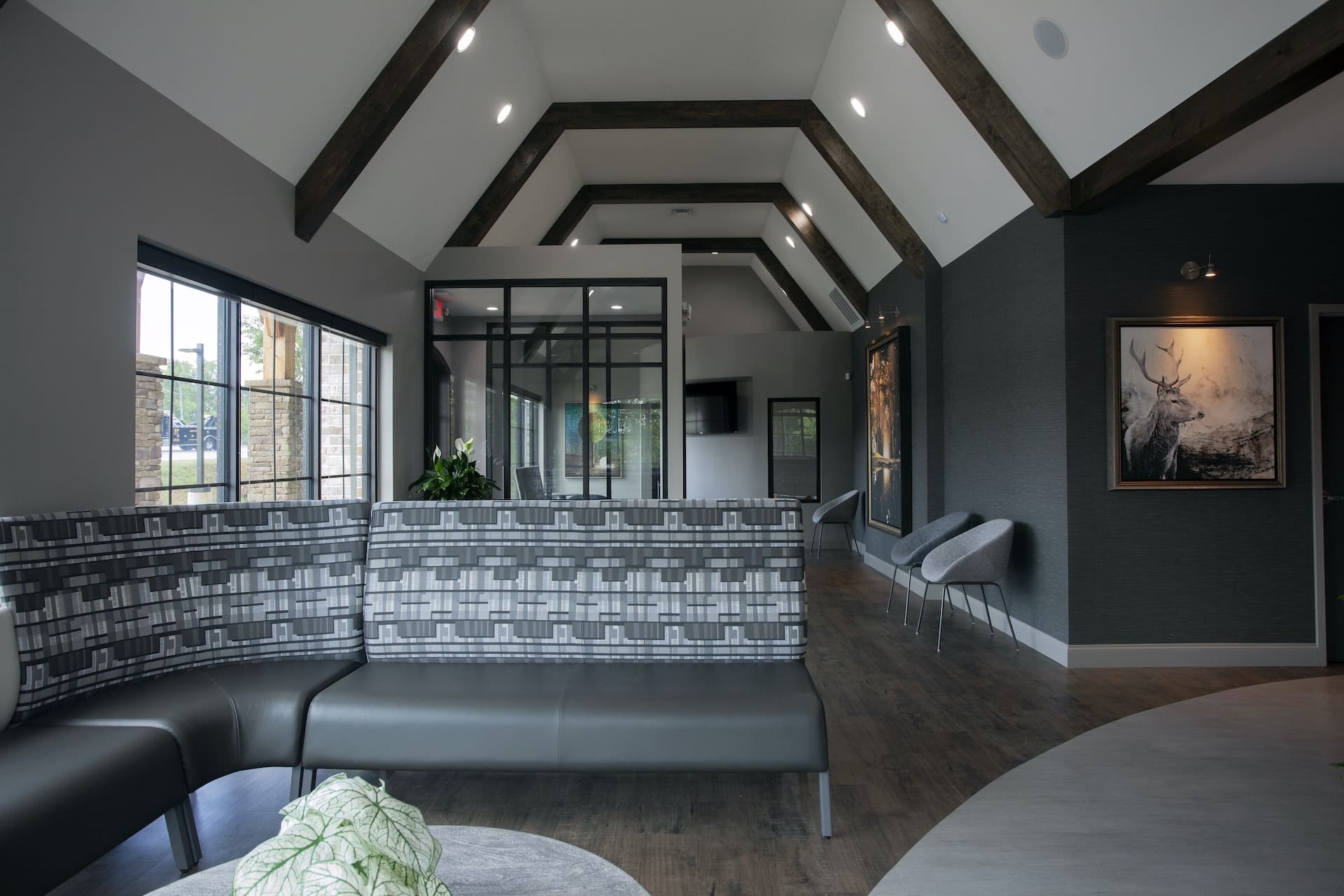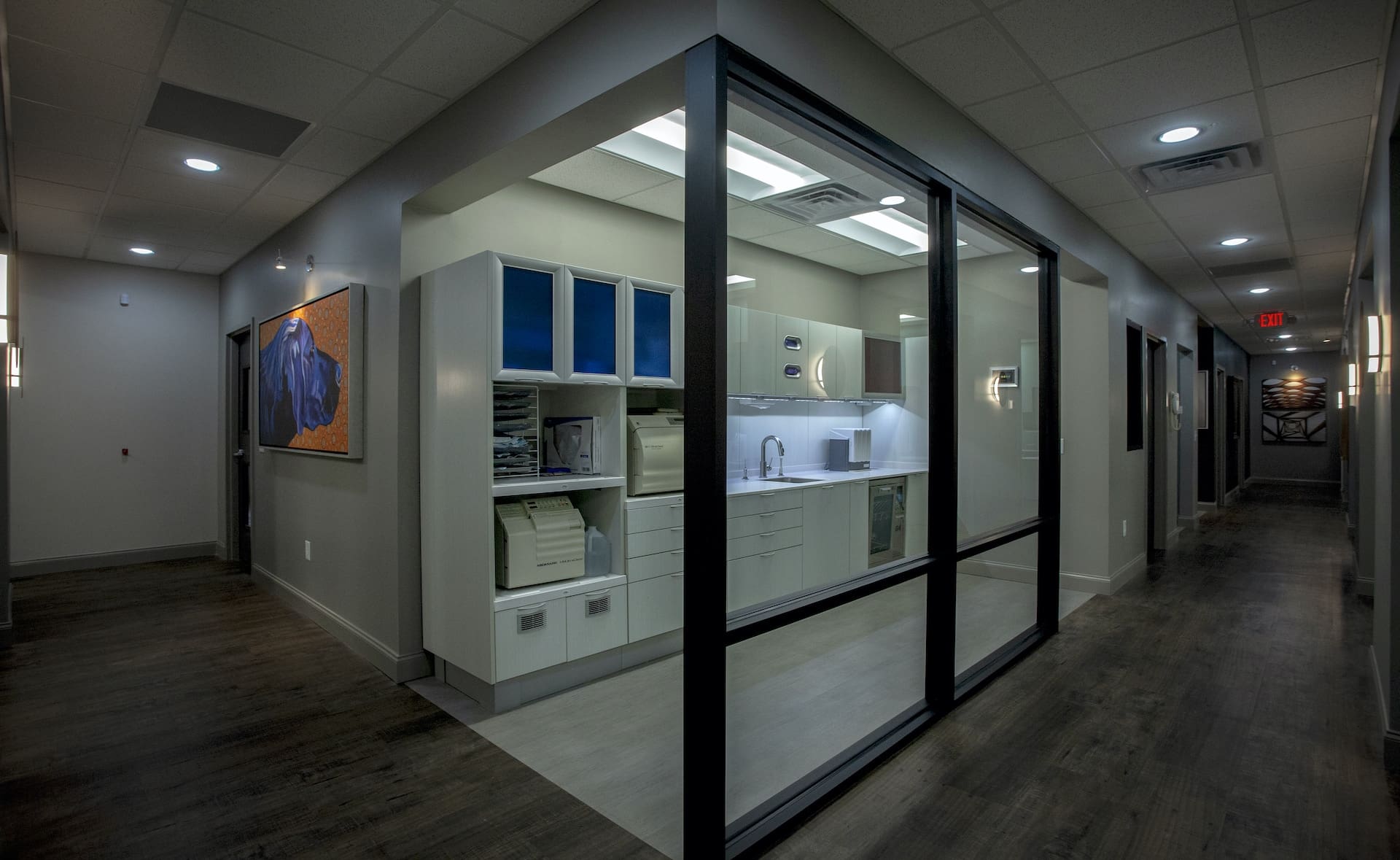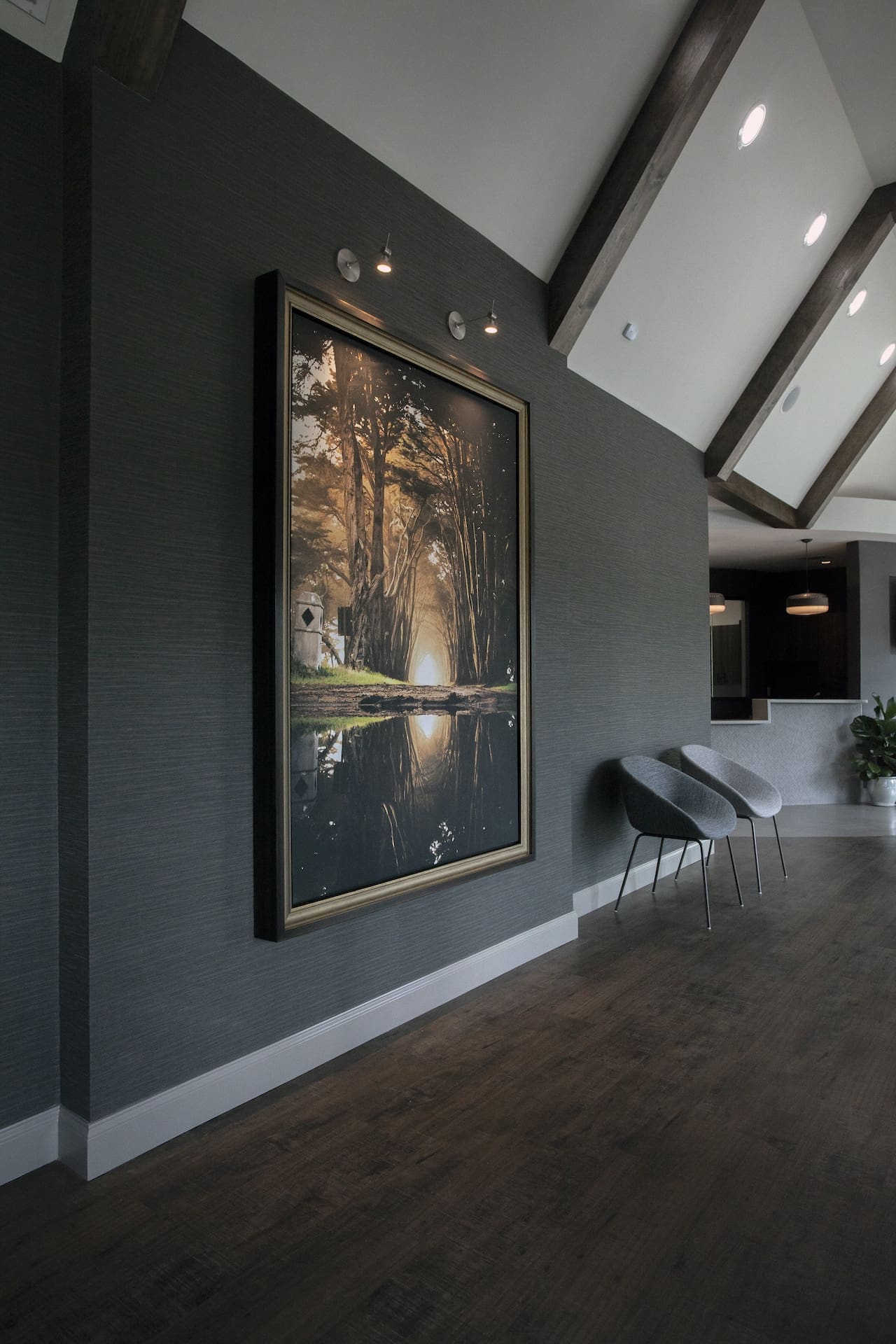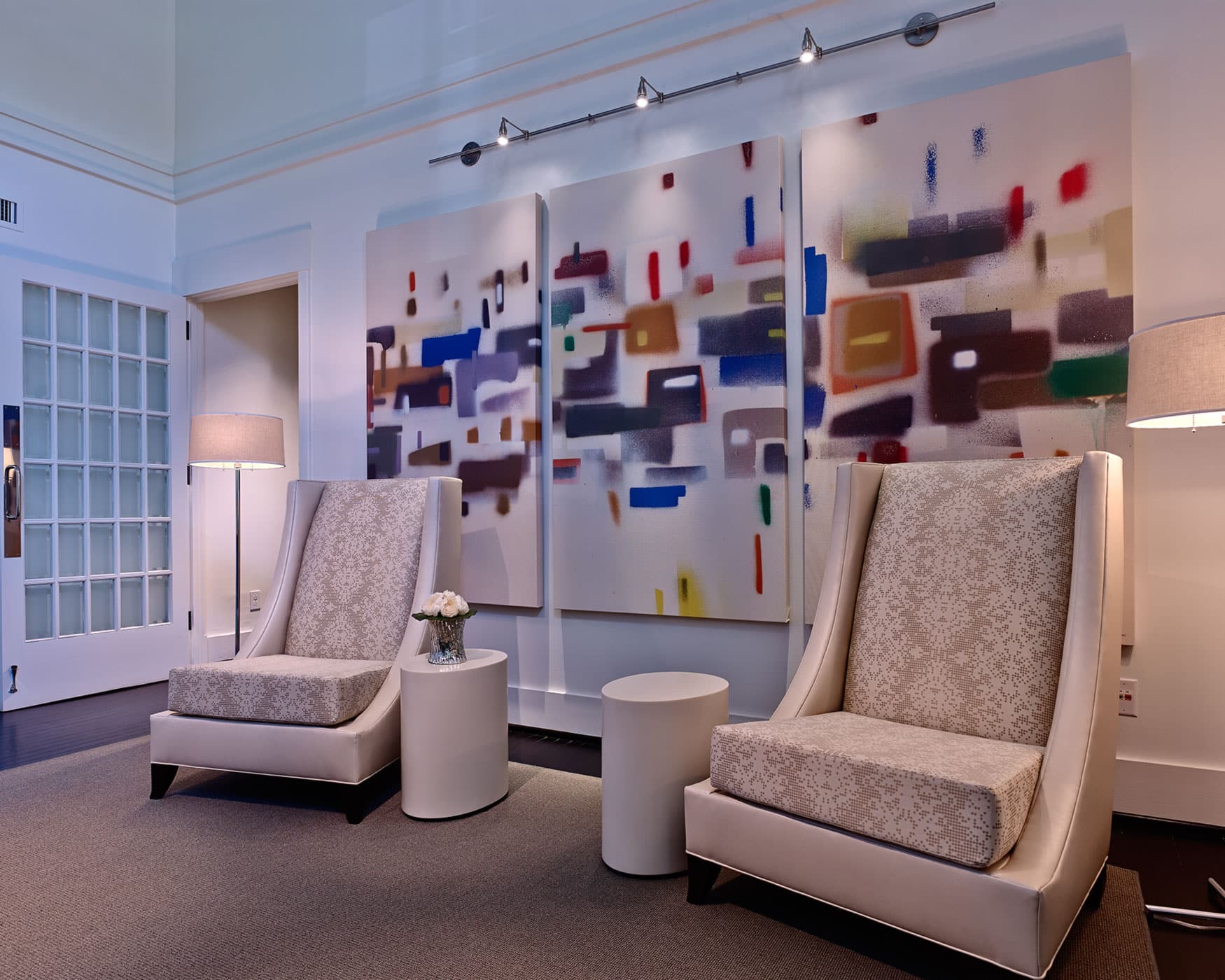Healthcare Interior Design
Ensuring Overall Wellness
Healthcare interior design is an important field of interior design that ensures the visual appeal, health, and safety of medical and dental settings.
Effective healthcare interior design makes patients feel safe and well-cared for and ensures that doctors and their staff can work efficiently. Meeting the practical requirements unique to the healthcare field ensures the overall wellness of everyone who interacts with the space. However, aesthetic considerations are also important.
Elegantly designed healthcare settings reflect the professionalism of the caregiver and appeal to the patient demographic. As a fully licensed interior designer, Heidi H. Core, RID, IIDA has spent a large part of her 25-year career specializing in healthcare settings, including both small private practices and large design programs for hospitals. She works closely with each of her clients to create beautiful and effective settings that elevate the standard of care. If you’re interested in transforming your offices, schedule a consultation today. You can reach her Birmingham, Alabama offices directly by calling 205.259.8780 or filling out this online contact form at your convenience.

About Interior Design for Healthcare
The goal of interior design is to create pleasing aesthetics and a layout that supports efficient operations. The result is an optimal experience for everyone who interacts with the space. Safety and accessibility are always chief concerns of interior design. However, there are additional requirements for healthcare settings and many specific to the particular field of medical or dental services being offered. When it comes to healthcare, the stakes are high.
Design Considerations for Healthcare Interiors
- Infection control
- Noise
- Safety
- Security
- Patient perception of quality of care
- Patient emotional care
- Staff productivity
- Workflow
- Technology integration

Where Are Meets Science
In the past decades, there has been a major shift toward Evidence-Based Healthcare Design. This approach emphasizes research in order to develop design strategies that better satisfy the needs of the end-users. (1) Interior designers consider the functional requirements of the site and the behaviors of the people that inhabit it to design spaces that encourage and facilitate a positive experience. That could mean angling furnishings to encourage doctor-patient communication, locating sinks in convenient areas to increase handwashing, or providing artwork that is chosen with sensitivity to the services being provided. (2) Heidi Core begins every design project with extensive research about her clients’ practice to best address their concerns and ensure that the needs of their staff and patients are accommodated.
A Focus on Healthcare Providers
Expertise matters when choosing an interior designer, and Healthcare Interior Design requires specialized knowledge. Heidi Core has previously worked as a member of the Department of Design at The Mayo Clinic in Rochester, Minnesota, which was recently voted the top healthcare facility in the United States. Her work in smaller facilities was recognized by the International Interior Designer Association, which awarded her Best of Small Healthcare in 2013. With Heidi Core’s diverse portfolio of healthcare projects and decades of experience, clients can rest assured that the needs unique to their field of caregiving will be met.
Heidi Core Interior Design specializes in healthcare offices that include:
- Pediatric
- Dental
- Orthodontic
- Plastic Surgery and Med Spa

Personal Consultation
Every interior design project starts with a research phase, and every research phase begins with getting to know the client. Your practice is unique and learning more about what makes it special allows Heidi to make informed decisions about how to emphasize its advantages. During your consultation with Heidi, you’ll have the opportunity to discuss your goals and concerns. Whether you’ll be knocking down walls or just refreshing your waiting rooms and hallways, you’ll have the advantage of working with a designer with a deep understanding of what makes a healthcare interior successful.
Research Considerations
- Client’s personal aesthetics
- Practice size and patient traffic
- Services offered
- Equipment used
- Patient demographics
- Safety risks
- Architectural features
- Practice location
Having a solid understanding of the day-to-day at a healthcare facility is necessary for good design. But, great design prepares for the future. Where do you see your practice in 5 years? Working with an experienced interior designer can ensure that your space can adapt to accommodate future needs.

Design Project Management
Once the scope of your healthcare interior design project has been determined, and you’ve approved the final designs for your offices, the execution phases of your design project will begin. Thanks to detailed drawings and plans, you’ll be able to anticipate the final results. Lighting and ceiling fixtures, architectural features, and design elements will have been selected, materials ordered, and installations scheduled. During this time, Heidi Core will be working to coordinate the many moving parts of the project, ensuring that everything is being installed according to the many codes and regulations and that a strict level of quality is maintained. Doing so ensures that the project progresses according to schedule, within budget, and that beautiful results are achieved. This also allows you to return to your day-to-day practice and continue caring for patients as quickly as possible.
References
- Cama, R. (2009). Evidence-based healthcare design (pp. 1–27). John Wiley & Sons.
- Ulrich, R. S. (1991). Effects of interior design on wellness: theory and recent scientific research. Journal of Health Care Interior Design, 3(3), 97–109. https://europepmc.org/article/med/10123973
- Bosch, S. J., & Lorusso, L. N. (2019). Promoting patient and family engagement through healthcare facility design: A systematic literature review. Journal of Environmental Psychology, 62, 74–83. https://doi.org/10.1016/j.jenvp.2019.02.002
- Ulrich, R. S. (1997). A theory of supportive design for healthcare facilities. Journal of Healthcare Design: Proceedings from the … Symposium on Healthcare Design. Symposium on Healthcare Design, 9(9), 3–7; discussion 21-24. https://pubmed.ncbi.nlm.nih.gov/10539150/
- Dijkstra, K., Pieterse, M. E., & Pruyn, A. (2008). Stress-reducing effects of indoor plants in the built healthcare environment: The mediating role of perceived attractiveness. Preventive Medicine, 47(3), 279–283. https://doi.org/10.1016/j.ypmed.2008.01.013
- Tièche, R., da Costa, B. R., & Streit, S. (2016). Patient satisfaction is biased by renovations to the interior of a primary care office: a pretest-posttest assessment. BMC Health Services Research, 16(373), 373. https://doi.org/10.1186/s12913-016-1647-4
